Share
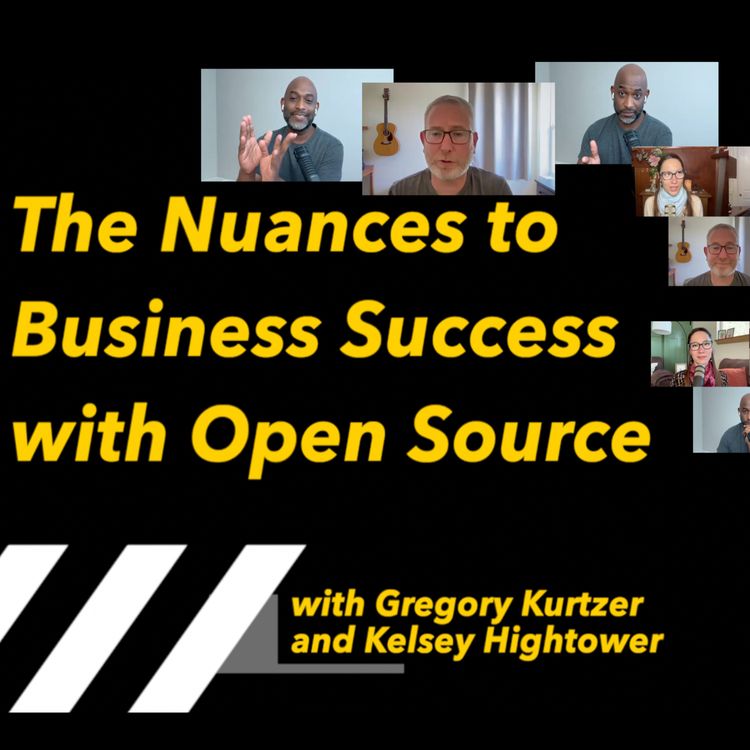
My Open Source Experience Podcast
The Nuances to Business Success with Open Source
Building a business strategy is hard in general, and when open source becomes part of the equation it can get even more challenging.
In the recent past there were multiple examples of companies changing the license on their open source project to something less or not at all open. This is often harmful to the companies themselves and the pattern is always harmful tot he open source ecosystem.
In this episode of the My Open Source Experience podcast Gregory Kurtzer and Kelsey Hightower share their experiences to dig deeper into the challenges and solutions to building a business around open source.
You will learn the following:
- How to evaluate if your company is ready to get involved in an open source project or open up one of their internal ones
- Why it matters who owns an open source project's trademark
- Why is lock out sometimes worse than lock in
- How to identify the business value when relying on open source projects
- How to figure out which open source project is viable to build a business around
- Empty promises don't work long term
More episodes
View all episodes
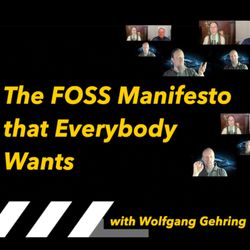
8. The FOSS Manifesto that Everybody Wants
42:12||Season 3, Ep. 8Deciding to go all in on open source is often an enormous milestone in itself, however, it is just a small first step in the overall change process. Many companies have the buy-in on the engineering level, and some have it in the top management as well, but that is not enough!In this episode of the My Open Source Experience podcast, Wolfgang Gehring shares his journey through this transformation within his company, Mercedes-Benz, which has been centered around a FOSS Manifesto that made a huge impact in the industry.Learn more about:- The Mercedes-Benz FOSS Manifesto- The influence the company achieved, internally and industry-wide, by publishing their manifesto: https://opensource.mercedes-benz.com/manifesto/ - Why the company made the manifesto available under the Creative Commons license- Automotive-focused open source groups- Knowledge building and sharing within a large company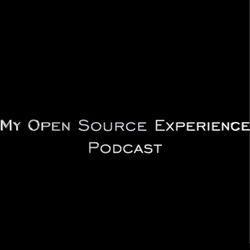
7. Let's Talk Business, Standards and Open Source
43:43||Season 3, Ep. 7Both business language and standards can be very strict, especially when we are looking into practices of governments or highly regulated industries like automotive and telecommunications. On the contrary, open source is developed by diverse groups, where standards and regulations don't apply to all use cases, and is often valued for its flexibility. So, how do all these fit together?In this episode of the My Open Source Experience podcast, industry experts explore how to fit open source into very strict processes and standards.- Ashan Senevirathne covers efforts in the telecom segment where standards, technology evolution and open source clash- Austen Bryan share his experience with fitting open source into the acquisition guidelines and processes that the United States government has- Magnus Buhrgard highlights examples of bringing open source standards and patents closer to each other- Philipp Ahmann talks about safety standards in the automotive industry, and highlights where open source is used within cars- Samson Goddy shares tips on how to talk about open source in corporate environments using business language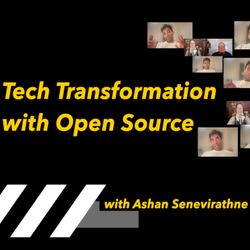
6. Tech Transformation with Open Source
44:14||Season 3, Ep. 6Technology provides a lot of opportunities and companies need to be flexible to grab them, but they aren't always ready. The telecommunications segment is an example where flexibility is not a given, historically.In this episode of the My Open Source Experience podcast, Ashan Senevirathne talks about his experience working for operators in the telecom segment. As operators are transforming their networks it's not enough to just into the software, they also need to evolve company practices and culture. Open source plays a key role in this overall transformation.Learn more about:- The five nines concept, and how that pairs with failing fast- Transforming a telco in to a tech-co- How ot get from strong proprietary culture to open sourcing a project- The role of FOSS guidelines- Open source business values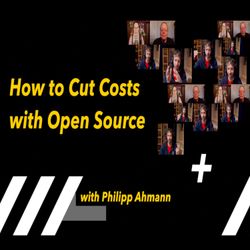
5. How to Cut Costs with Open Source
42:14||Season 3, Ep. 5Open source is still often looked at as free software, as in no cost. Those who think this is the value of OSS, they usually use and integrate it in a more expensive way than they should.In this episode of the My Open Source Experience podcast Philipp Ahmann talks about his experience with open source in the automotive industry, which is very sensitive to development, innovation and maintenance costs. He also shares a story about attempting to fix a plane's entertainment system in flight. Did he succeed?Learn more about:- Cost savings through relying on open source- The importance of reusability, and how open source supports that- Vendor lock-in with open source- The price of maintaining a fork downstream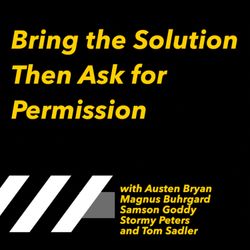
4. Bring the Solution Then Ask for Permission
43:18||Season 3, Ep. 4Open source in the corporate world is often counterintuitive, since the norms, practices and processes are very different, or at least they seem like. But it doesn't have to be that scary and complicated as it looks.In this episode of the My Open Source Experience podcast, guests talk about their experience with making open source work within a company, to the extent of working upstream. Topics cover management layers, corporate structure, change management and how individuals experience participating in open source communities.Hear more from:- Stormy Peters on (the lack of) social norms, open source champions and the maintenance lock-in of proprietary code within companies- Magnus Buhrgard on the fears middle layer management has about open source and landing OSS code in a product- Samson Goddy on the importance of speaking the business language and the challenge with corporate company structures when it comes to open source- Tom Sadler on what motivates or keeps individuals back from contributing to open source- Austen Bryan on how to succeed with implementing changes in an organization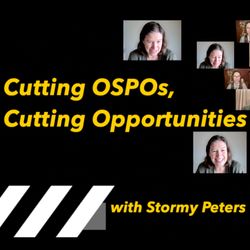
3. Cutting OSPOs, Cutting Opportunities | My Open Source Experience Podcast
42:31||Season 3, Ep. 3In life, in industry and sometimes in open source, we keep re-inventing and re-implementing things. If all software development happened behind closed doors we didn't have any other choice but to do duplicative work and slow down innovation.In this episode of the My Open Source Experience podcast Stormy Peters shares how the desire to avoid wasteful practices in software development drove her to open source. Her career has been revolving around OSS and she put her passion and growing experience into good use by helping companies, big and small, to build structure, processes and practices to be able to invest and engage in open source.Learn more about:- How to enable a company to rely and engage with open source- Challenges with open source licenses and copyright- Building an OSPO- Company acquisition and how to approach that from an OSPO- Tools that help investing in and working with open source- The concepts of an old and a young OSPO- The evolution of an OSPO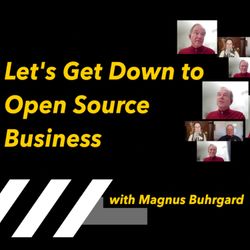
2. Let's Get Down to Open Source Business
48:37||Season 3, Ep. 2Open source can be intimidating, and sometimes hiding in plain sight.In the past decade the telecommunications industry has been going through their open source transformation journey, which is bumpy at times. This is an industry segment that is highly regulated and standardized, which can clash with the fast-paced and flexible nature of open source.In this My Open Source Experience podcast episode, Magnus Buhrgard shares some of his insights about the telecommunications industry, and its relationship to open source.Learn more about:- Open source initiatives and projects in the telecommunications industry- Why mostly telecom operators are the ones who start new open source projects- What middle-layer management dislikes about open source- Business reasons and value to adopt and invest in open source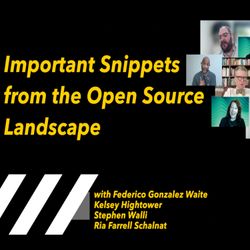
1. Important Snippets from the OSS Landscape
48:08||Season 3, Ep. 1This is the kick-off episode of Season 3!The first episode of the season touches on a 5 important topic areas that are key to the open source ecosystem, one way or the other: events, AI, open source maintainers, Cyber Resilience Act (CRA) and open source in the public sector.Episode highlights:- Stephen Walli shares his experience and thoughts about the value of open source events- Ildikó highlights some key upcoming open source conferences around the globe- Ria Farrell Schalnat points out some of the challenges in the AI space regarding licensing and copyright- Kelsey Hightower talks about open source maintainers, and highlight some important differences between open source as a license type and as a community- Federico Gonzalez Waite shares some learnings from the journey he had with the Mexican government through their open source transformation- Ildikó shares some important details about the CRA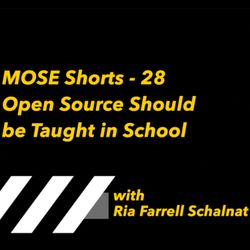
MOSE Shorts - 28: Open Source Should be Taught in School
09:14|Good education is crucial, also, the earlier in your life you're expodsed to an experience the better the chance it quickly becomes a skill. Despite of how long open source has been around, it is still not integral part of education, tech, legal or other. Should this change?In this segment of the My Open Source Experience podcast Ria Farrell Schalnat talks about how she was teaching an adjutant class at a university that was touching on open source, specifically because she didn't get that education during her studies. She also shares what challenges people she knew faced during learning about open source.Learn more about:- Why it is important to have open source as part of academic curriculums- In legal terms, not all licenses are the same, even if they are all open source licenses, and why that poses challenges for lawyers- Conventions versus case law- In legal circles, community plays a crucial role to figure out new areas of law and legislations, for instance AI- Is it time to have the next generation to graduate as open source experts?!